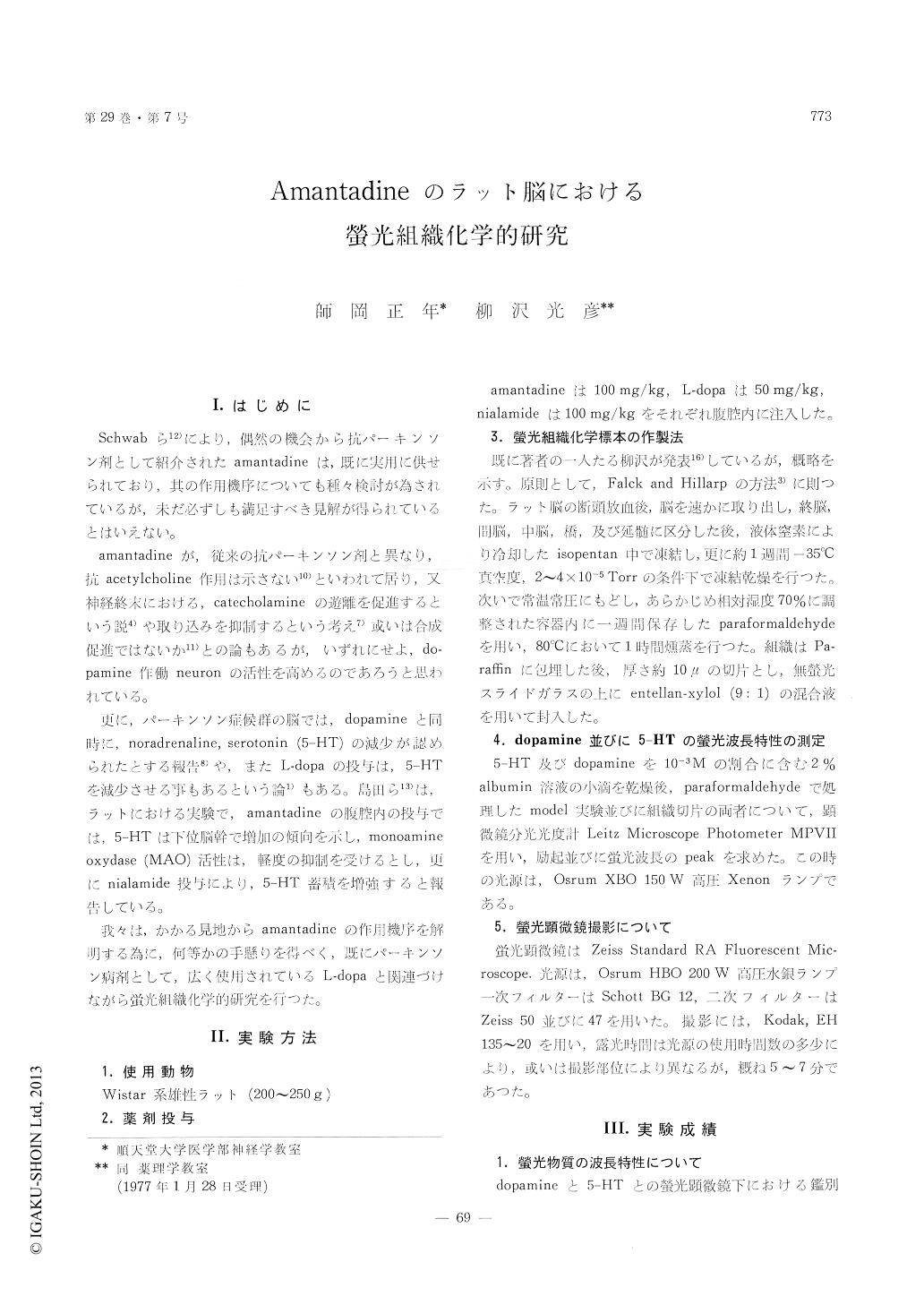Japanese
English
- 有料閲覧
- Abstract 文献概要
- 1ページ目 Look Inside
I.はじめに
Schwabら12)により,偶然の機会から抗パーキンソン剤として紹介されたamantadineは,既に実用に供せられており,其の作用機序についても種々検討が為されているが,未だ必ずしも満足すべき見解が得られているとはいえない。
amantadineが,従来の抗パーキンソン剤と異なり,抗acetylcholine作用は示さない10)といわれて居り,又神経終末における,catecholamineの遊離を促進するという説4)や取り込みを抑制するという考え7)或いは合成促進ではないか11)との論もあるが,いずれにせよ,do—pamine作働neuronの活性を高めるのであろうと思われている。
Amantadine has been recently introduced as an antiparkinsonism agent. The authors investigated the central action with the fluorohistochemical method according to Falck and Hillarp.
By model experiment and using tissue specimen, it was confirmed that the characteristics of wave length of dopamine fluorophor and 5-T fluorophor had their excitation maxima and emission maxima at 415 mμ and 490 mμ, and 420 mμ and 520 mμ respectively. The fluorescent neurons with these wave-length characteristics were called dopamine and serotonin neuron respectively.
In the present experiment, dopamine neurons were investigated in the zona compacta of sub-stantia nigra, in the caudate nucleus and the putamen, while 5-HT neurons were studied within the reticular formation of medulla oblongata.
Fluorescence of dopamine nerve cell bodies after administration of L-dopa 50 mg/kg i. p. plus amantadine 100 mg/kg i. p. was more strongly intensified than that treated with L-dopa alone. The processes of these cells were also distinctly visible.
In the caudate nucleus and the putamen of the telencephalon, the green fluorescence of dopamine nerve terminals was diffuse, but it was observed increased in intensity when L-dopa and amantadine were administered together.
In this condition the section of non-fluorescent nerve bundle was identified against strongly fluorescent neuropil. 5-HT neurons of medulla oblongata as well as the endothelial cells of capil-laries were clearly noticed.
This trend was found to be particularly remarka-ble when pretreated with nialamide.
From these findings, amantadine was able to in-crease the fluorescence of the dopamine and 5-HT neurons. This fact may suggest that amantadine inhibits the brain monoamine oxidase.
The anti-parkinsonism action of amantadine might be related to both dopaminergic mechanism and serotonergic mechanism in a very complicated manner.

Copyright © 1977, Igaku-Shoin Ltd. All rights reserved.


